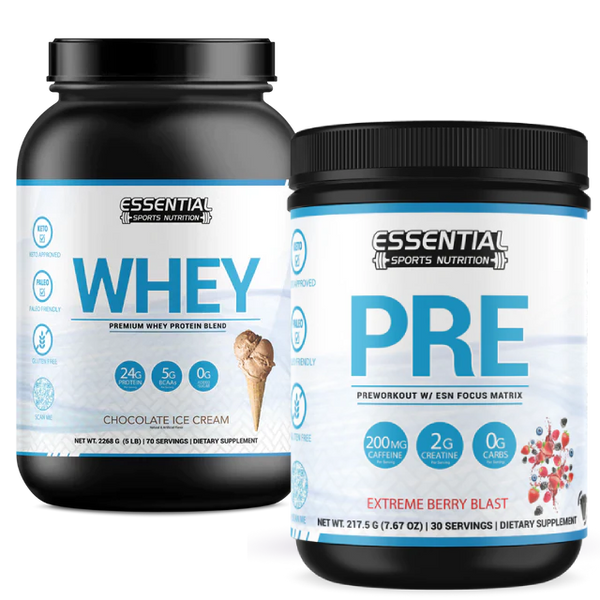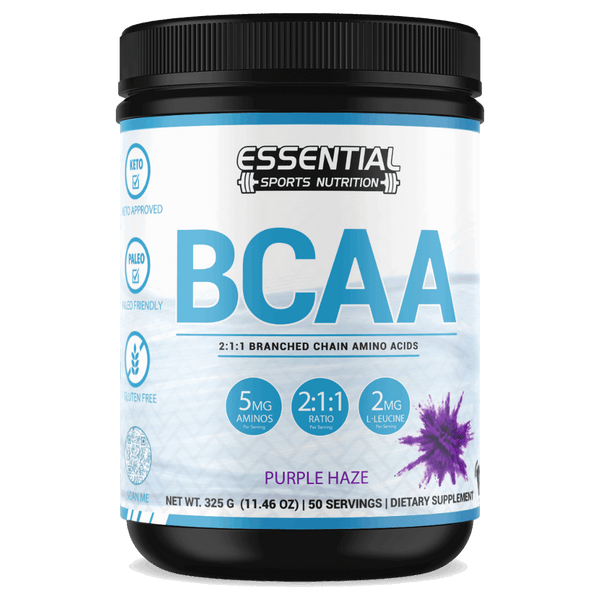Arm Workouts for Total Beginners: No Experience Needed
Starting to work out can feel like stepping into a whole new world, especially when you want to focus on your arms. Maybe you're looking to build strength or simply tone up, but you're not sure where to begin.
One key fact stands out: many arm workouts are designed with beginners in mind, focusing on biceps, triceps, and forearms using simple exercises.
Our guide is here to show you the ropes of effective arm workouts suitable for beginners. From understanding the importance of form and which muscle groups to target to walking through exercises like dumbbell curls and bench dips step by step - we've got it covered.
The goal is to equip you with everything needed for a successful start in building stronger arms.

Key Takeaways
- Good form and technique are essential when starting arm workouts to avoid injury and properly work the muscle groups.
- Beginners should train their arms one to two times per week, allowing muscles time to rest and grow between sessions.
- Dumbbell curls, hammer curls, bench dips, and cable pushdowns are effective exercises for beginners looking to build strength in their biceps and triceps.
- Incorporating a mix of free weights and machine exercises can offer benefits like improved balance and targeted muscle training.
- Engaging your core during arm workouts enhances stability, improves performance, and reduces the risk of injury.
Understanding the Basics of Arm Workouts
Learning about arm workouts is key to building strength in your upper limbs. It's crucial to focus on form and technique while getting to know the different muscle groups in your arms.
Importance of Form and Technique
Good form and technique are key for beginners starting arm workouts. They help prevent injuries while lifting weights or doing body-weight exercises. Using the right posture targets the correct muscle groups in your arms, such as the biceps and triceps.
This focus ensures every exercise works effectively. Beginners should pay close attention to how they move during exercises like bicep curls and tricep dips.
Practicing proper technique also boosts strength gains over time. It makes sure that your muscles work hard during each session. For instance, keeping your elbow joint stable during a hammer curl increases tension on the targeted muscles, leading to better growth and strength.
Similarly, aligning your shoulder blades correctly during push-ups activates not only arm muscles but also those in your upper body for a more comprehensive workout.
Understanding Muscle Groups in the Arms
Your arms have several key muscle groups that play vital roles in lifting, pulling, and holding things. The biceps are on the front of your upper arm and help you bend your elbow and rotate your forearm.
Triceps, found at the back of the upper arm, straighten the elbow. Forearm flexors sit on the inside of your forearm and work to curl your wrist toward you. Forearm extensors are on the opposite side and help lift your wrist away from you.
Knowing how these muscles work together is crucial for doing arm exercises correctly. Exercises like bicep curls target the biceps, while triceps extensions focus on strengthening the triceps.
To get a balanced workout, it’s important to do exercises that work all parts of your arms. This approach ensures all muscle groups strengthen evenly and can improve overall arm function and appearance.
Step-by-Step Guide to Beginner Arm Workouts

Our step-by-step guide to beginner arm workouts makes it easy to get started on your strength training journey. It walks you through each exercise, like biceps curls and triceps dips, with clear directions for safe and effective sessions.
Dumbbell Biceps Curl
To do the bicep curl, you need to sit on a bench at a 45-degree angle. Hold weights in your hands with palms facing up. Make sure your feet are flat on the floor and shoulder-width apart.
This position helps you get ready for the exercise without hurting yourself.
Lift the dumbbells towards your shoulders by bending your elbows. Keep your upper arms still; only move your forearms. Do not swing the weights or use momentum; lift them using muscle power alone.
Lower them back down slowly after a short pause at the top of the curl. This exercise builds arm muscle effectively when done correctly and regularly, making it ideal for beginners looking to increase their strength and size in their upper body workouts.
Dumbbell Hammer Curl
Grab a pair of dumbbells to start with hammer curls, aiming for strong biceps and forearms. Stand up straight, keeping your feet hip-width apart. Let your arms hang by your sides with palms facing each other.
Lift the weights towards your shoulders, keeping elbows tight to your sides. This simple move works wonders if you keep form in mind.
You can mix things up with different challenges like using bands or adjusting angles. Hammer curls help build grip strength too. Just remember to curl both arms evenly and don't rush; slow, controlled movements are key to making those muscles work harder.
Cable Rope Curl
To start a cable rope curl, first find the cable machine at your gym. Attach a thick rope to the low pulley of the machine. Stand facing the device with your feet shoulder-width apart for stability.
Hold onto each end of the rope with your palms facing each other. This stance primes you for targeting those bicep muscles effectively.
Next, keep your elbows close to your torso and pull the rope towards your shoulders by bending at the elbow. Make sure not to move your upper arms; this focuses all movement on those biceps brachii muscles in the upper arm and increases muscle engagement.
Then slowly lower back down after a short pause, keeping tension on those biceps throughout. Repeat this motion for several repetitions as part of an isolation exercise designed specifically for building strength in those upper-arm muscles.
Bench Bodyweight Triceps Dips
To do bench bodyweight triceps dips, you need a sturdy bench. Sit on the edge of the bench and place your hands next to your hips. Your fingers should point forward and grip the edge of the bench tightly.
Slide off from the bench so that only your hands support you. Keep your legs extended in front of you with heels touching the ground for balance. Lower yourself by bending your elbows until they are at a 90-degree angle, then push yourself back up to start position.
This move targets your triceps but also engages muscles in your chest and shoulders.
Make sure not to let your shoulders roll forward as you perform this exercise; keep them down and back. Start with three sets of eight reps each, adjusting as needed based on how strong you feel after each set.
Listen to how it feels—if it's too hard at first, shorten the range or reduce repetitions per set for safety and better muscle building over time.
Dumbbell Skull Crusher
Grab a pair of dumbbells for the skull crusher and lie down on a bench. This exercise targets your triceps brachii muscle, hitting all three heads effectively. Hold the weights above your chest with straight arms, palms facing each other.
Carefully lower them towards the back of your head. Keep your upper arms still; only bend at the elbows. Raise the weights back up to complete one rep.
Make sure you keep proper form to avoid injury and get the most out of this tricep-targeting move. Beginners should start light and increase weight gradually as they become more comfortable with the movement.
Mixing skull crushers into your workout routine will strengthen and tone your triceps alongside other arm exercises for balanced muscle development.
Cable Triceps Pushdown
To do a cable triceps pushdown, stand in front of the cable machine and attach a handle or rope. Make sure your feet are shoulder-width apart for stability. Grip the attachment with both hands and keep your elbows close to your body.
This position targets all three heads of the tricep muscle, making it an excellent isolation exercise.
Push down until your arms are fully extended but don't lock your elbows. Slowly return to the starting position to maintain tension on your triceps. Keep repeating this movement for several reps.
This exercise focuses on toning and sculpting your arms by maximizing tension on the triceps while minimizing involvement from other muscles.
Zottman Curls
Zottman Curls work out both your biceps and forearms in a unique way. You start with dumbbells in each hand, arms straight down at your sides, palms facing you. Lift the weights by bending your elbows, while turning your hands so palms face up at the top.
The genius part comes next: rotate your wrists so palms face down before slowly lowering the weights back to start. This exercise hits different muscles by changing hand positions.
George Zottman came up with this move to bulk up his forearms and biceps. It combines lifting and twisting actions that challenge more muscle groups. You need dumbbells for this exercise.
Keep your upper arms still; only move from the elbows down. Make sure to control the motion both ways to get full benefits for stronger arms and better grip strength.
Incorporating Arm Workouts into a Fitness Routine

Making arm workouts a part of your fitness plan helps you build strength. Now, learn how to fit these exercises into your weekly routine for better results.
Scheduling Arm Workout Days
Plan your arm days carefully to give muscles time to rest. You should work on your chest, arms, and shoulders one day. Then focus on your legs the next day. This gives parts of your body time to heal and get stronger.
Make sure there is enough space between arm days. Rest is key for muscle repair and growth. Using free weights like dumbbells during workouts can help build strength in your biceps, triceps, and forearms.
Aim for two to three arm sessions each week with at least 48 hours between them for recovery.
Pairing Arm Exercises with Other Workouts
Mixing arm exercises with other workouts can make your fitness routine more complete. Do arm exercises on the same days as you work on your chest or back. This helps because movements like the push press or pull-up also use your arms a lot.
You get to train your arms while focusing on bigger muscle groups too.
Add arm workouts to HIIT (High-Intensity Interval Training) for added intensity. During cardio days, try including bicep curls or tricep extensions between running intervals. This way, you boost both strength and endurance at once.
It's smart to match these exercises with activities that engage different parts of your body, so everything gets an equal workout chance throughout the week.
Conclusion and Final Tips for Beginner Arm Workouts

We walked through the keys to effective arm exercises, including dumbbell curls and cable movements. These steps are practical and simple to bring into your training. They promise to build strength in your biceps, triceps, and forearms.
For ongoing progress, mix these workouts into your routine regularly. Remember, consistency turns effort into results. Keep pushing forward with these workouts for stronger arms!
Arm Exercises for Beginners FAQs
Q: What is a good beginner arm workout?
A: A good beginner arm workout includes exercises like bicep curls with barbells, tricep dips, hammer curls, and overhead presses. Start with light weights to learn the right form.
Q: How can I warm up my arms before lifting weights?
A: Before lifting weights, do some arm circles, wrist flexes, and shoulder stretches. This helps prepare your muscles and joints for strength training.
Q: What are compound movements?
A: Compound movements are exercises that work multiple muscle groups at once. Examples include pull-ups that strengthen your lats, biceps branchii, and rotator cuff all together.
Q: Can I do arm workouts at home without equipment?
A: Yes! You can use resistance training techniques like isometric exercise where you push against a wall or do reverse curls by holding a heavy book in each hand.
Q: Why should I include both isolation exercises and compound movements in my routine?
A: Including both types of exercises ensures you target specific muscles like the brachialis for growth while also enhancing overall upper body strength through compound movements.
Q: How often should beginners train their arms each week?
A: Beginners should aim to train their arms 2-3 times per week allowing rest days between to let muscles recover and grow stronger.
Q: How long should a beginner arm workout session last?
A: A good starting point for beginners is a 15-minute arm workout routine to avoid overexertion and allow for proper muscle recovery.
Q: How should I perform a dumbbell arm workout as a beginner?
A: As a beginner, start with lighter weights, focus on proper form, and perform each rep slowly and with control to prevent injuries and maximize muscle engagement.
Q: What are some key exercises for beginners to target the arm muscles?
A: Some key exercises for beginners targeting the arm muscles include bicep curls, tricep dips, overhead presses, and hammer curls.
Q: What are important tips to keep in mind during a beginner arm workout?
A: Remember to keep your elbows close to your body, maintain proper posture, breathe correctly, and adjust the weights according to your fitness level during a beginner arm workout.
Q: How can a beginner ensure a safe and effective arm workout routine?
A: To ensure safety and effectiveness during an arm workout routine, it's essential for beginners to start with a warm-up, maintain proper body alignment, and listen to their body's limits.
Q: Can a beginner personalize their arm workout routine with specific exercises?
A: Yes, beginners can personalize their arm workout routine by focusing on specific exercises that target their desired muscle groups, gradually increasing intensity as they progress.




























